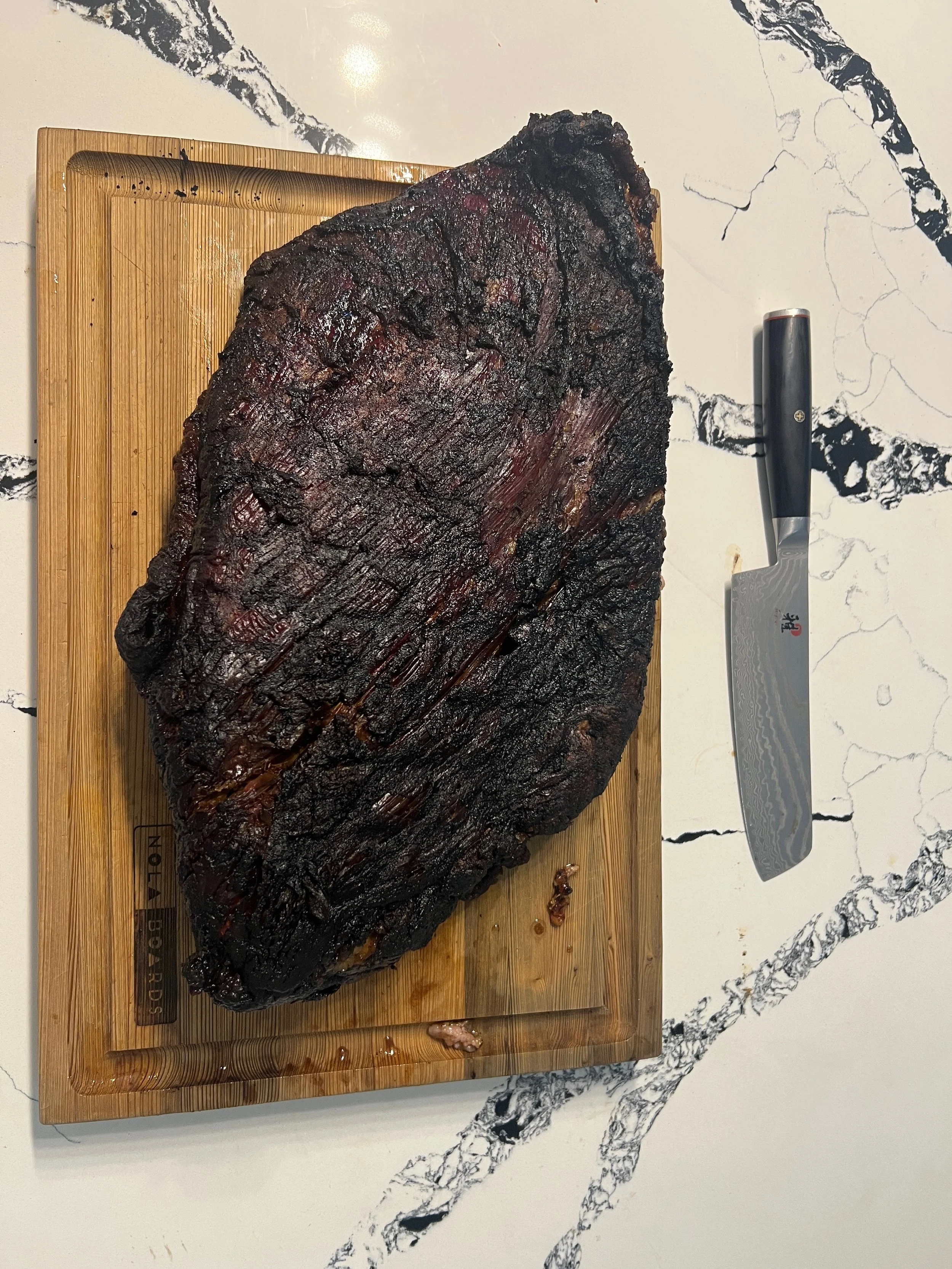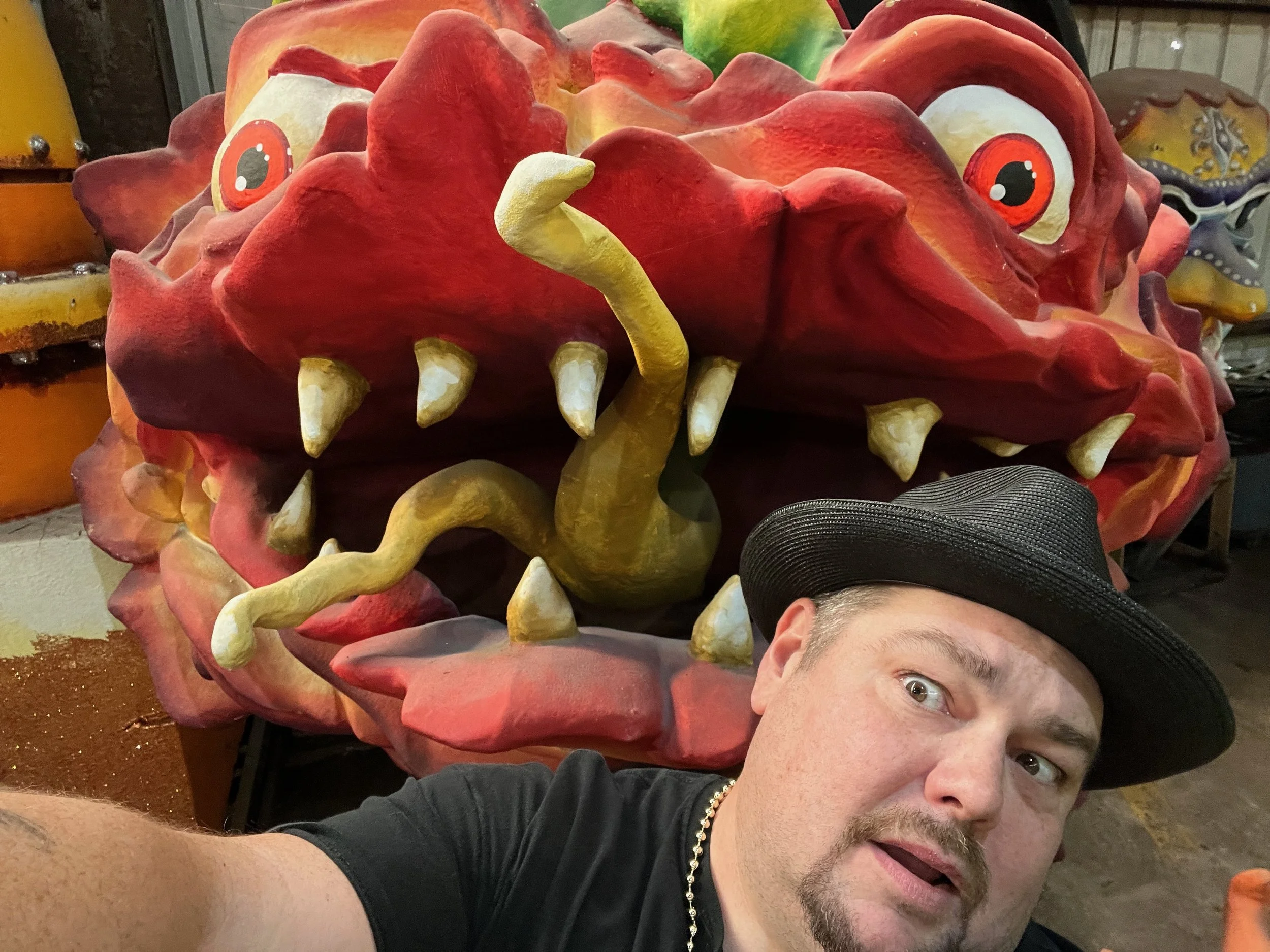Whole Smoked Brisket
I recently decided to tackle a classic Texas-style brisket for a family visit, using a pellet smoker, some butcher paper, and a trusty cooler. Because what better way to impress the in-laws than with a smoky, tender brisket and homemade biscuits? Here’s how it all went down.
The Brisket
Selecting the Brisket
I started with a whole packer brisket, which includes both the point and flat cuts. The size can be intimidating, but I find that larger briskets often cook more evenly—plus, you get plenty of leftovers. Make sure to choose a brisket with good marbling and a healthy fat cap on top.Trimming
Trimming is key. You don’t want too much fat, or it will take forever to render out; too little, and you risk drying out the meat. I left about a quarter-inch of fat on top. On the underside (the “flat” side), I trimmed away any large pockets of hard fat or silverskin.Seasoning
I kept it simple with a classic salt-and-pepper rub (a 50/50 mix). If you prefer more flavor, you can add onion powder, garlic powder, or paprika. But for me, just salt and pepper allows the smoke to shine.
The Smoker Setup
Pellet Smoker
I used a pellet smoker for this cook, which makes temperature control so much easier. It’s basically a set-it-and-monitor situation. The consistent heat is a lifesaver, especially when you’re aiming for a long, slow cook.Temperature
I set the smoker to around 225°F (107°C). Depending on the brisket size, you can adjust the time, but low and slow is the rule of thumb. Expect anywhere from 10 to 14 hours (sometimes more) for a full packer brisket.The Smoke
I like using a mix of oak and hickory pellets for a deep, rich flavor. For an even more robust flavor, you could toss in some mesquite pellets. Keep an eye on your hopper so you don’t run out of fuel mid-cook.
Wrapping and The “Stall”
The Stall
Briskets typically hit a “stall” around 150–160°F internal temperature, where the cooking process seems to halt. This is due to evaporative cooling from the meat’s surface moisture. Don’t panic; it’s completely normal.Butcher Paper
Some folks use foil, but I prefer wrapping in butcher paper once the internal temperature reaches about 160°F. Butcher paper lets the brisket breathe a bit, preventing it from steaming as much as foil would, and helps maintain a nice bark.Pro Tip
When you wrap, do it tight. Double-wrap if needed. The tighter the wrap, the better you retain moisture and bark quality.
The Cooler Trick
Resting
Once the brisket hits about 195–203°F internal (you can use a meat thermometer to confirm), it’s time to pull it off the smoker. But you’re not done yet—this is where the cooler comes in.Wrap and Rest
Keep the brisket in its butcher paper, then wrap it in towels and place it in a clean cooler (no ice, of course!). Let it rest there for at least an hour, but two to three hours is even better. This resting period redistributes juices and ensures tenderness.
Homemade Biscuits
Simple Ingredients
While the brisket was resting, I whipped up some homemade biscuits. All you need is flour, baking powder, salt, butter, and milk (or buttermilk if you want that tangy taste).Cut and Chill
I cut them into squares or circles and made sure the butter was ice-cold. Then I let the dough rest in the fridge so the butter remained cold. That way, they puff up and become super flaky in the oven.Bake
I baked them at around 425°F (218°C) for 12–15 minutes, until they turned golden on top. There’s nothing like the smell of fresh biscuits to make your house feel extra welcoming.
Serving It Up
The Unwrap
After the rest, unwrapped the brisket and carefully sliced it against the grain. The bark was beautifully dark, and the interior had that perfect smoke ring and glistening juices.Plating
I served thick slices of brisket alongside the biscuits, plus a few simple sides (maybe coleslaw or a potato salad) to let the brisket be the star of the show.In-Law Approved
My in-laws were beyond impressed. The brisket was tender, juicy, and had that quintessential smoky flavor. The biscuits were fluffy and perfect for soaking up extra juices. No fancy sauce required—just a fork and maybe a dab of barbecue sauce if that’s your style.
Final Thoughts
Smoking a brisket is definitely an undertaking, but the pellet smoker simplifies the process a ton. Wrapping in butcher paper at the stall and letting it rest in a cooler are two small steps that make a massive difference in tenderness and flavor. And homemade biscuits? They’re the perfect cozy companion to that smoky beef.
So, if you’re looking to impress guests or simply want to tackle a classic barbecue staple, grab a whole brisket, load up your pellet smoker, and enjoy the process. Just don’t forget the butcher paper, the cooler, and of course, a batch of homemade biscuits. You might end up with a new family tradition—and a house that smells like pure barbecue heaven.








